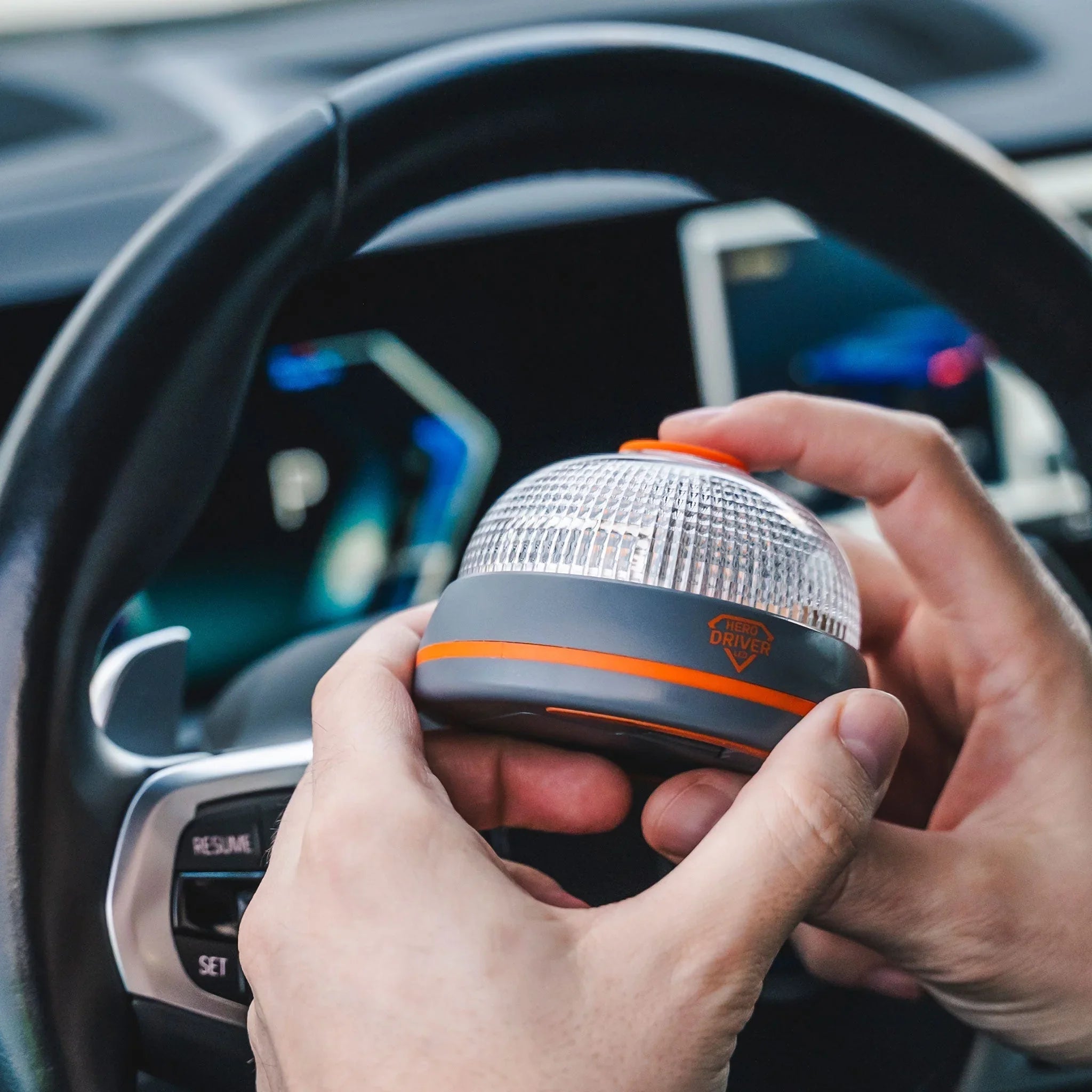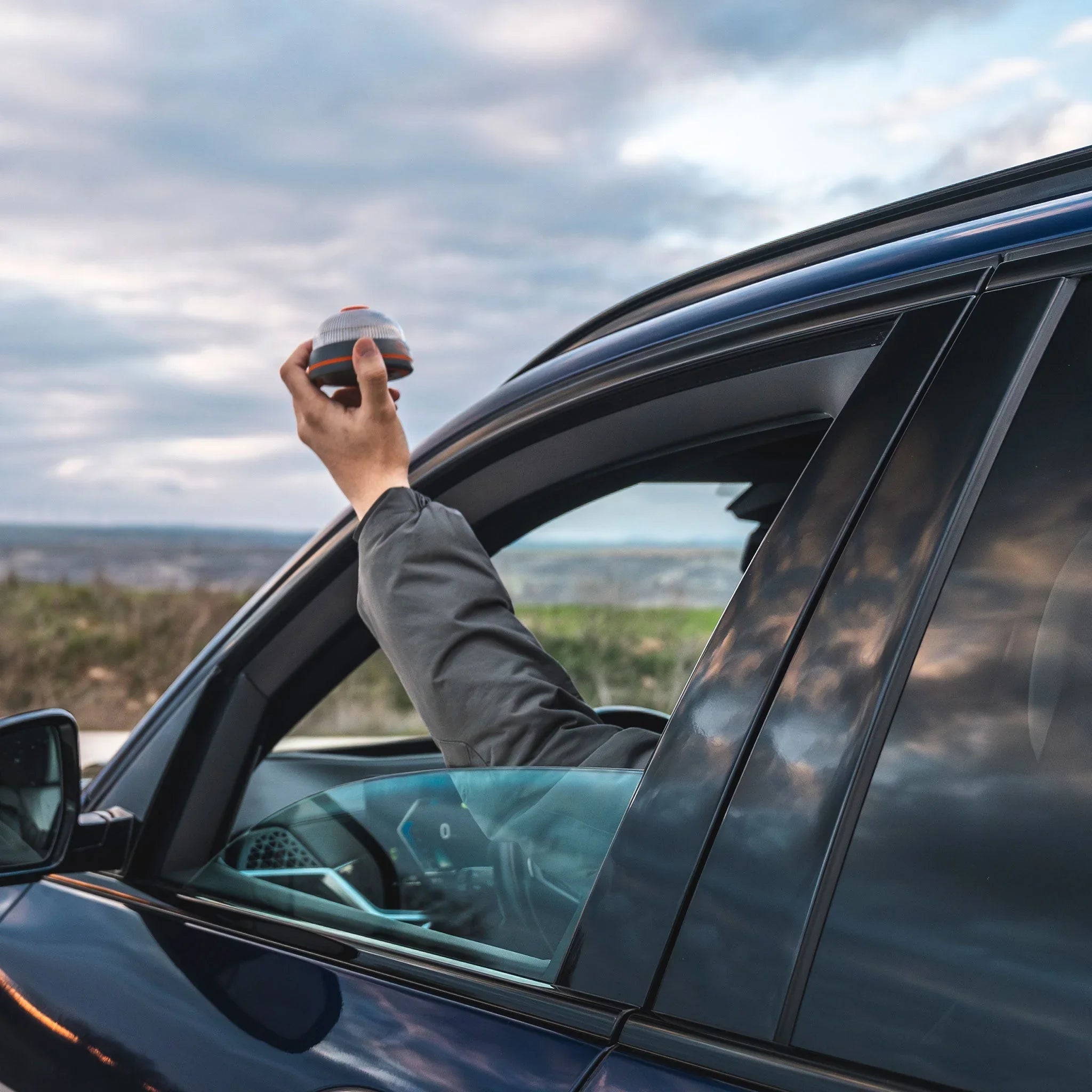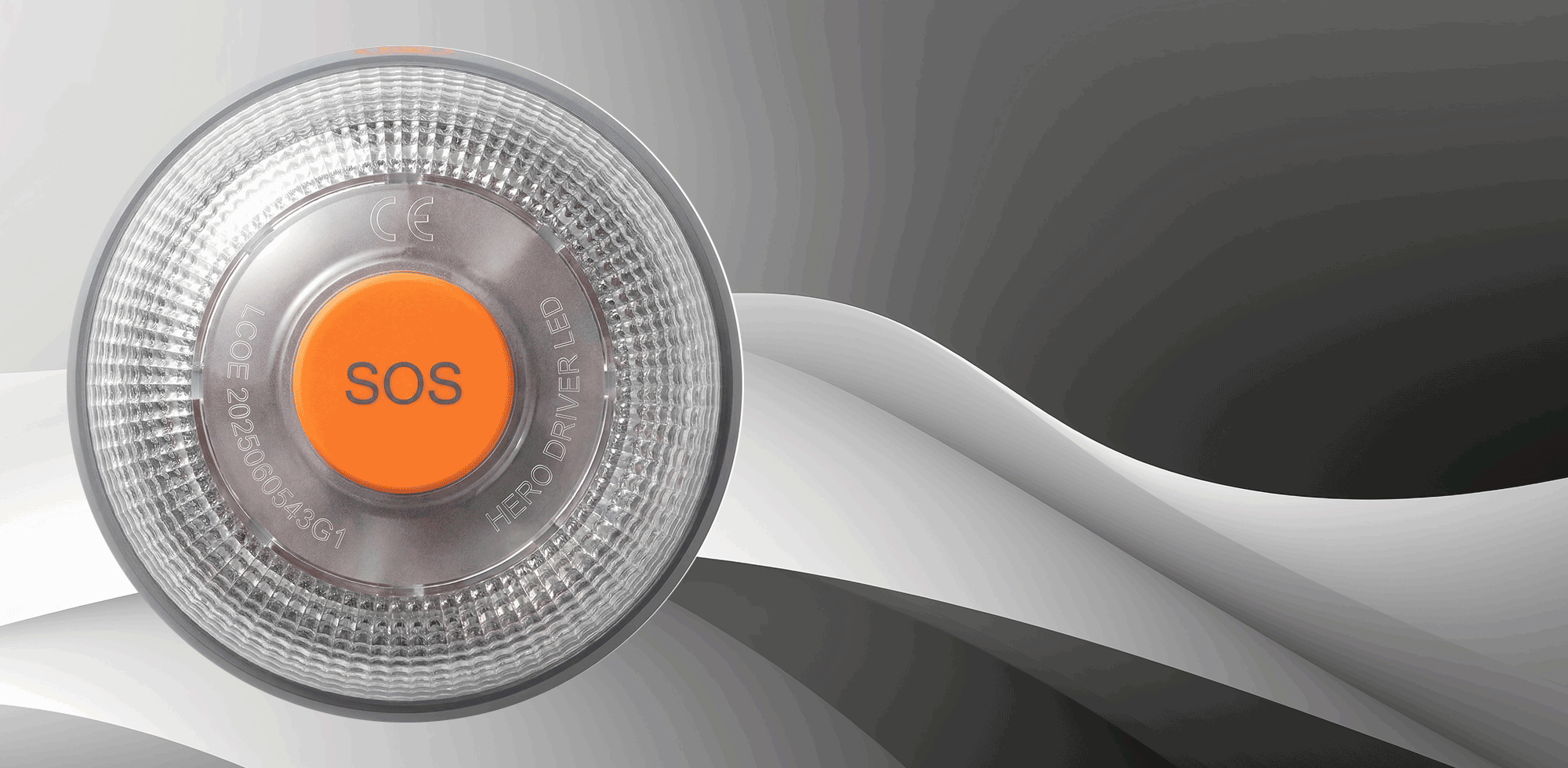Did you know that the V16 warning sign will soon become an essential element of Spanish road safety? Under the new regulations, certain vehicles are required to carry an approved and connected V16 beacon. Here we explain which vehicles are included, where to install it correctly, and how to choose the most advanced model for your safety.
What is the V16 beacon and why is it mandatory?
The V16 beacon is a luminous device designed to signal road breakdowns or accidents. Its purpose is to increase the visibility of the stopped vehicle and improve the safety of both the driver and other road users.
Since 2021, the DGT has allowed the use of the V16 beacon as an alternative to emergency triangles. However, as of January 1, 2026, all vehicles subject to traffic must carry an approved and connected V16 beacon. These devices transmit the vehicle's location in the event of an emergency, allowing assistance services to respond quickly and accurately.
Mandatory V16 vehicles: Who must carry the beacon?
The General Directorate of Traffic clarifies that not all vehicles have the same obligation regarding the V16 beacon. As of today and with future regulations, the vehicles that must be equipped with the V16 beacon starting January 1, 2026, are the following:
- Passenger cars: Private and family cars must carry a V16 hazard light.
- Buses: From urban to intercity or long-distance vehicles, all road buses are included.
- Freight vehicles: Vans, light and heavy trucks, delivery vehicles, and professional transport vehicles are equally subject to this requirement.
- Special transport vehicles: Includes cranes and vehicles for transporting exceptional loads.
- Mopeds and motorcycles: Although not currently mandatory for these types of vehicles, their inclusion may change depending on future regulations, their use is strongly recommended to ensure maximum visibility.
Don't forget that, although agricultural vehicles and special construction machinery are not strictly required under the same criteria as passenger cars or trucks, the DGT strongly recommends that they also have an approved V16 beacon. This enhances safety when these vehicles are traveling or stopped on the road, especially in low visibility conditions.
Where is the V16 beacon placed?
Correct installation of the V16 beacon is crucial for it to fulfill its protective function. According to the DGT (Directorate-General for Traffic), the beacon should be placed on the roof of the vehicle, as high and as visible as possible. This simple gesture drastically increases the distance from which other drivers can detect your signal.
Steps to correctly place the beacon:
- Stop your vehicle safely, preferably off the road if possible.
- Without leaving the cabin, place the V16 beacon on the roof, taking advantage of its magnetic base.
- Activate the beacon; it will begin emitting flashing lights visible from 1 km away, even in adverse conditions.
- The regulations eliminate the requirement to place the old triangles if the V16 beacon is used, reducing risks by eliminating the need to use the road.
Special considerations for agricultural and construction vehicles
On tractors, combine harvesters, or public works machinery, it's important to find a secure and stable spot on the bodywork for the V16 beacon. It's recommended to place it in the cab or on the upper surface, ensuring the flash is visible 360 degrees. This way, regardless of the size or load, maximum road visibility is maintained.
Hero Driver LED: The advanced connected V16 beacon
When choosing a V16 beacon, connectivity and reliability are key factors. The Hero Driver LED model stands out for offering guaranteed connectivity until 2040 thanks to the Vodafone network, meeting all the technological requirements set by the DGT (Directorate General of Traffic).
Designed in Spain by Ryme Automotive, a company with a track record in the automotive industry since 1982, this beacon combines robustness, ease of use, and advanced communications technology. Using the Hero Driver LED means that, in the event of a breakdown or accident, your position will be automatically transmitted to the DGT cloud and to assistance services. This way, you'll receive help faster and reduce the time you spend at risk.
Main advantages of the Hero Driver LED model:
- Extended Connectivity: The Hero Driver Beacon offers connectivity until 2040 without the need for premature device replacement.
- Approved by the DGT: Complies with current and future regulations for mandatory V16 vehicles.
- Rugged design: Designed to perform perfectly in rain, snow and high temperatures.
- Simple and secure: It is effortlessly installed and activated with a single gesture.
Legal obligation: When will the V16 beacon be required?
Currently, the V16 beacon is a voluntary accessory, but starting in January 2026, it will be mandatory for all affected vehicles. Legislation specifies that, in the event of a breakdown or accident, the driver must signal the presence of the vehicle with an approved and connected V16 beacon, replacing traditional emergency triangles.
The fine for non-compliance will be equivalent to that for incorrect use of triangles: 200 euros. Furthermore, in the event of an accident or assistance, insurance companies may consider the lack of an approved V16 beacon to be negligence.
Exceptions and recommendations
- Mopeds, motorcycles and microcars: In situations of poor visibility or quiet streets, this is advisable even if not explicitly stated in the current instructions.
- Agricultural and special machinery: Recommended for travel on conventional roads and in densely trafficked urban areas.
Frequently Asked Questions about mandatory V16 vehicles
Can I still use my warning triangles?
Yes, until 2026, but after that, only the connected V16 beacon will be valid. Using both devices is possible during the transitional period.
Is any V16 beacon on the market valid?
No, it must be approved and have connectivity to automatically send the position, as required by the DGT. The Hero Driver LED model meets all these requirements and more.
Where do I keep the beacon in my vehicle?
Keep it in an accessible location: the glove compartment, the center armrest, or a compartment that's easy to open from the seat. The key is that you can store it from the inside, without exposing yourself to traffic.
What happens in case of an electrical failure?
The Hero Driver LED beacon features long-lasting batteries and a standalone system; it's not dependent on the car's electrical system.
Does the V16 beacon completely replace triangles?
Starting in 2026, yes. Until then, you can use both.
Concrete benefits of incorporating the V16 beacon
Beyond complying with the law, the V16 beacon provides real benefits for all drivers:
- Increased safety: High-visibility flashers alert drivers with enough time to react.
- Lower personal risk: You don't need to get out to signal, avoiding accidents.
- Faster assistance: Connected devices like the Hero Driver LED transmit their location instantly.
- Universal compatibility: Suitable for passenger cars, trucks, buses, trailers, and recommended for agricultural applications.
Conclusion
Adapting to the new regulations is simple and, above all, vital for everyone's safety on the road. Equip your vehicle with an approved and connected V16 beacon, such as the Hero Driver LED model from Ryme Automotive. This way, you'll be protected and prepared for any unforeseen event.
Do you have questions about regulations or choosing your V16 beacon? Get informed and always choose approved, connected, and reliable products.




